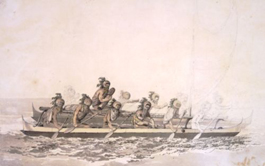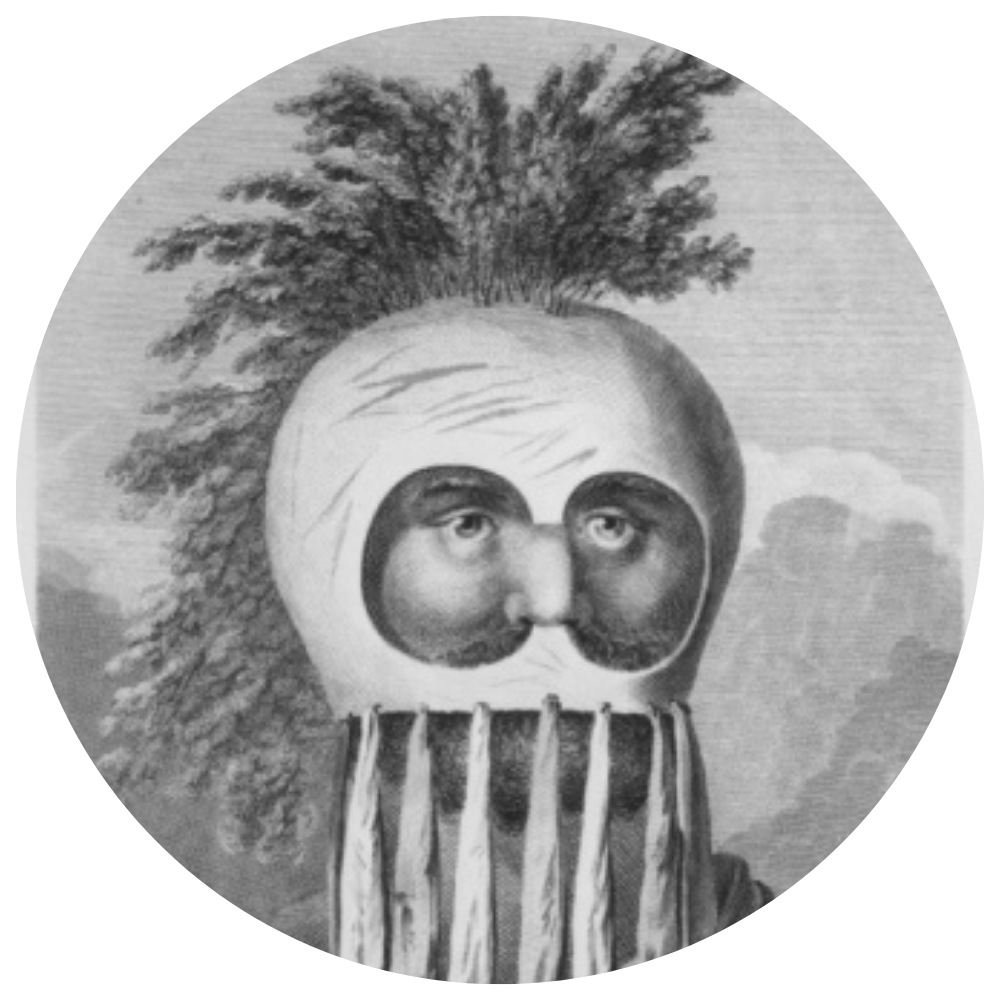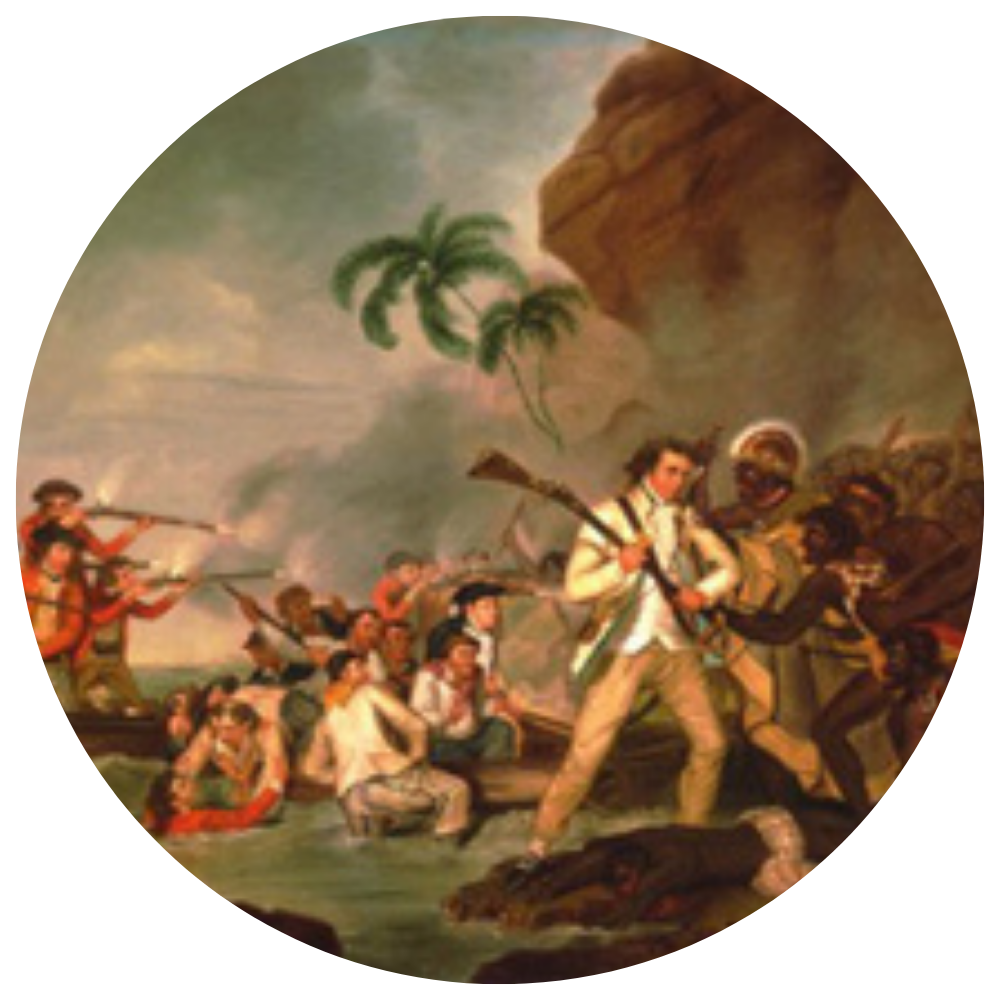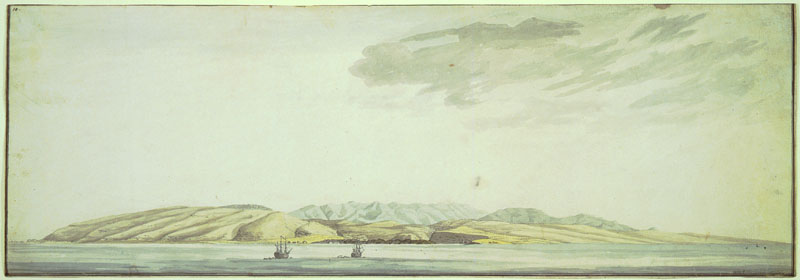Canoe of the Sandwich Islands, the Rowers Masked

by John Webber (1752-1793)
Graphite, ink, wash and watercolor drawing by John Webber, ca. 1778.
As the official artist aboard Captain James Cook’s third voyage through the Pacific (1776-1780), it was John Webber who visually defined for much of eighteenth-century Europe what the distant and exotic peoples and places of this relatively unknown world were like. His commission on this voyage was defined as ethnographic. His work served as a visual history to accompany the written accounts of Cook and his crew. Webber recorded landscapes, scenery, initial contact and other important aspects of society. These images offer a very rare glimpse at life prior to the swift and dramatic changes that would come soon after. The publication and marketing of these well-recorded voyages in the 1785 titled A Voyage to the Pacific Ocean, undertaken by the Command of His Majesty, for making discoveries in the Northern Hemisphere spurred great interest in this part of the globe.
Webber was not only a skilled artist, but also a prolific one. When he returned to England in 1780, he displayed over two hundred sketches made from the voyage. His initial work was developed, by himself and others, into finished engravings. These were published along with the official journals of Captain Cook in 1784. The death of Cook on the final voyage would only intensify interest in the expedition and Webber’s depictions. His work aboard Cook’s ships would eventually earn him a place in the prestigious Royal Academy, which was patronized by King George III.
Webber’s sketches while in Hawai‘i are invaluable as rare looks into early Hawaiian life, it is essential to remember that his representations were created through a lens that carried inherent ideas and understandings of an eighteenth-century European worldview. Webber’s art training prepared him to draw the European body and character. This specific view greatly shaped the way in which he drew Hawaiians. Webber was truly imaging the “other.” Also, both the written and sketched accounts of the voyage were affected by political concerns in Europe at the time. Many of the most commonly seen images that came to represent early Hawai‘i, are indeed second and third generation “workings” of his initial drawings. The sketches and watercolors that Webber created during the voyage were later adapted by engravers and others. These usually better known “finished products” were often significantly different than the original drawings.
This watercolor from the Bishop Museum Art Collection was sketched from a scene that Webber witnessed at Kealakekua Bay, on the western side of the Big Island of Hawai‘i. A double-hulled canoe appeared at Kealakekua where Cook’s ships had anchored. Aboard the canoe are 12 masked rowers, one of whom appears to be carrying a feathered ki‘i, or image. The rowers paddled by the European vessels and continued on to shore with no explanation as to their mission.
Location: Bishop Museum Archives
Collection: Art Collection
Call Number: Art. E.C. Hawaiian. Transportation. Canoes.
Artifact Number: SXC 96640















